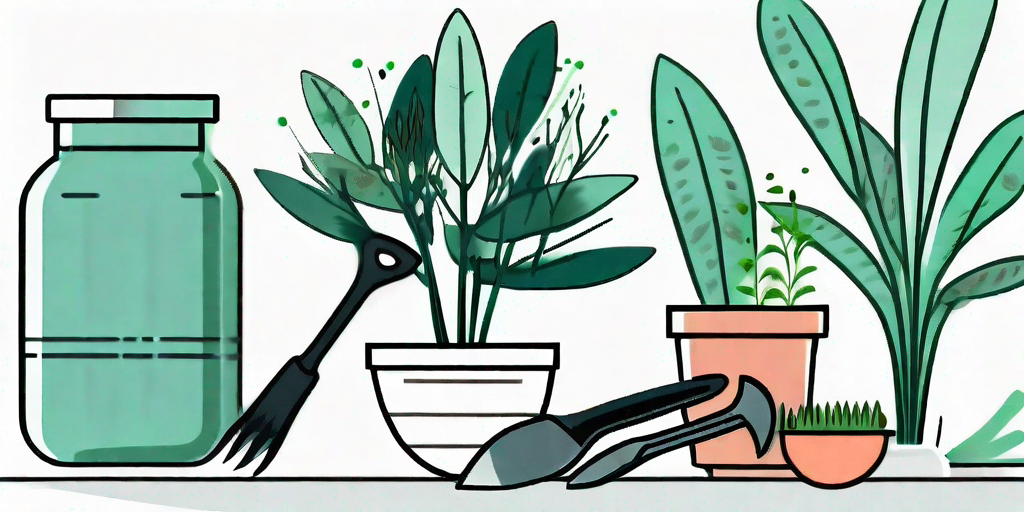
If you've ever been enchanted by the fiery red, pink, or yellow bristles of a bottlebrush plant and thought, "I'd love to have one of those in my garden," you're in the right place. We're about to embark on a horticultural adventure that will turn your green thumb into a bottlebrush-growing machine. So, buckle up, and let's dive into the wonderful world of bottlebrush propagation.
The Basics of Bottlebrush
The bottlebrush plant, scientifically known as Callistemon, is a native of Australia. It's a hardy shrub that's as tough as a kangaroo and as beautiful as a sunset over the Outback. It's also a bit of a show-off, with its vibrant, brush-like flowers that give the plant its name.
But don't let its exotic origins and flamboyant appearance intimidate you. Growing a bottlebrush plant is as easy as pie, or in this case, as easy as a Vegemite sandwich. All it needs is a sunny spot, well-drained soil, and a bit of TLC. And with the right propagation techniques, you can have an army of bottlebrush plants adorning your garden in no time.
Propagation: The Secret to a Bottlebrush Bonanza
Propagation is the process of creating new plants from a variety of sources: seeds, cuttings, bulbs, and other plant parts. Bottlebrush plants can be propagated from seeds or cuttings, but let's focus on cuttings because it's the quickest way to get your bottlebrush bonanza going.
Plus, it's as exciting as a treasure hunt. You get to play the part of an explorer, venturing into the wild (or your garden) to find the perfect branch for your cutting. And when you see your cutting grow into a full-fledged bottlebrush plant, it's like discovering a pot of gold at the end of a rainbow.
Step-by-Step Guide to Propagating Bottlebrush from Cuttings
Now, let's get down to the nitty-gritty. Here's a step-by-step guide to propagating bottlebrush from cuttings:
- Choose a healthy bottlebrush plant. Look for one with vibrant, brush-like flowers and no signs of disease or stress.
- Find a branch that's about the thickness of a pencil. Make sure it has several nodes (the bumps where leaves grow).
- Using a sharp, clean knife, cut the branch at a 45-degree angle. This increases the surface area for rooting.
- Remove the leaves from the bottom half of the cutting. This prevents moisture loss.
- Dip the cut end into a rooting hormone. This encourages root growth.
- Plant the cutting in a pot filled with a mix of peat moss and perlite. Make sure the nodes are covered by the soil.
- Water the cutting and place it in a warm, bright spot. But avoid direct sunlight, as it can scorch the cutting.
- Keep the soil moist but not soggy. In a few weeks, the cutting should start to grow roots.
And voila! You're now the proud parent of a baby bottlebrush plant. Give yourself a pat on the back, do a little dance, or celebrate however you like. You've earned it.
FAQs About Bottlebrush Propagation
Now, let's tackle some frequently asked questions about bottlebrush propagation. Because knowledge is power, and the more you know, the better your bottlebrush-growing game will be.
When is the best time to take cuttings?
The best time to take cuttings is in the late spring or early summer. This is when the plant is actively growing and the branches are flexible but firm – perfect for cuttings.
How long does it take for the cuttings to root?
Patience is a virtue, especially in gardening. It usually takes about 4-6 weeks for bottlebrush cuttings to root. But don't worry, it's worth the wait.
Can I propagate bottlebrush from seeds?
Yes, you can propagate bottlebrush from seeds. But it's a bit like playing the lottery. It takes longer, and the results can be unpredictable. But if you're up for a challenge, go for it!
Final Thoughts
So there you have it, folks. The secret to successful bottlebrush propagation. It's not rocket science, but it does require a bit of patience, care, and a sense of adventure. But the reward – a garden filled with vibrant, brush-like flowers – is well worth the effort.
So go on, give it a try. And remember, in the world of gardening, there's no such thing as failure. Only learning experiences. Happy gardening!















